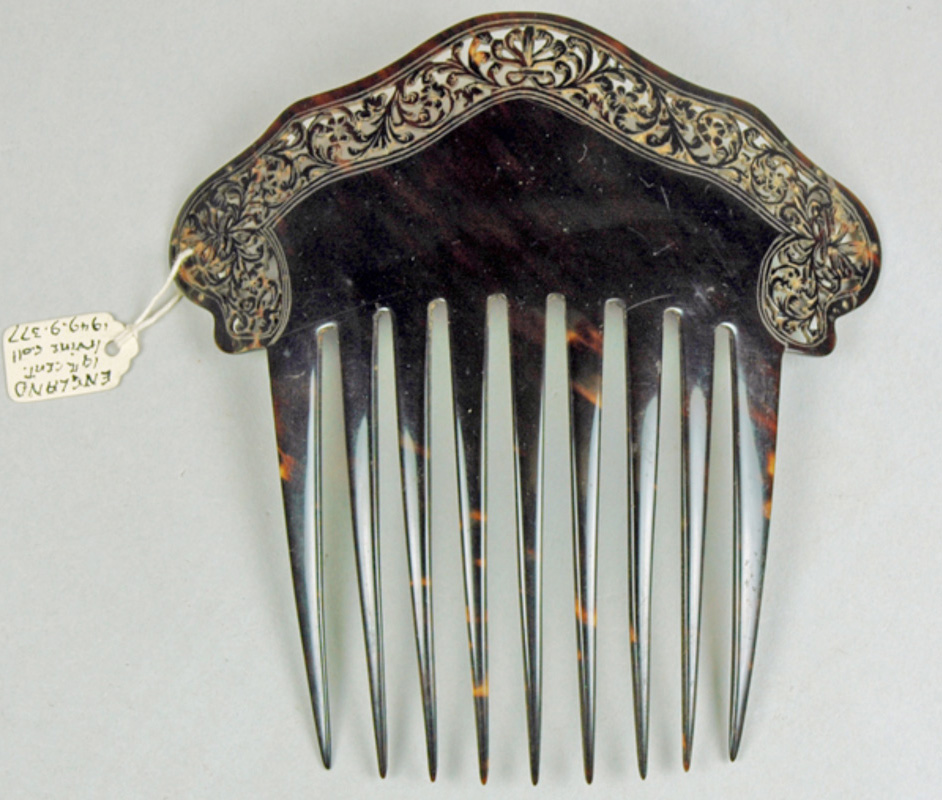Hair comb
England, 19th century
 Donated by Margaret F. Irvine in 1948; 1949.9.377Combs have been used to both tame and decorate the hair for centuries. The basic design evolved from the fingers of the human hand. The earliest known comb, made from animal bone and found in Syria, is said to date from 8000 BC and is fundamentally the same form as the mass-produced plastic comb of today. From Bronze-Age man to Cleopatra, to Napoleon's wife, Josephine, all would recognize these items as such.
Donated by Margaret F. Irvine in 1948; 1949.9.377Combs have been used to both tame and decorate the hair for centuries. The basic design evolved from the fingers of the human hand. The earliest known comb, made from animal bone and found in Syria, is said to date from 8000 BC and is fundamentally the same form as the mass-produced plastic comb of today. From Bronze-Age man to Cleopatra, to Napoleon's wife, Josephine, all would recognize these items as such.
Ornamental back combs with long teeth and decorative headings to project above the coiffure, developed rapidly in the 18th century and became an essential costume accessory for well-to-do women. This engaged jewellers and craftsmen in a growing industry that flourished in to the next century and by the late 19th century the decorative comb reached its apogee. Whilst some ornaments (such as this example) were still being made by hand, most were produced in vast numbers by means of mechanical die stamping.
Large Spanish-style folk combs known as peinita, designed to hold the traditional Andalucían lace mantilla (veil) atop of the head, became popular in France and spread to England in the early 19th century. They were worn without the mantilla itself however, instead perching above the forehead as a diadem or on top of a chignon or bun. After falling out of fashion, the mantilla comb was revived in 1875 with the first production of the Bizet's new opera Carmen, set in Seville, in Paris in 1875. Dating to this period, this comb is made out of one of the most favoured materials, tortoiseshell, which was obtained from the Hawksbill sea turtle (now a protected species). It has a pierced floral border reinforced with a metal edge and rivets. Natural forms such as curling leaves, flowers and insects were typical of the 1870s.
Tortoiseshell is a natural thermoplastic, meaning it can be warmed and moulded into different shapes without showing fusion seams. This comb may well have been made by pressing together various bits of shell in a mould, rather than being carved from one large piece. Tortoiseshell was a luxury item so more affordable imitation ornaments could also be found on the market including stretched, stained and painted horn (a common bi-product of the meat industry) and, a few years later, celluloid and plastic.
